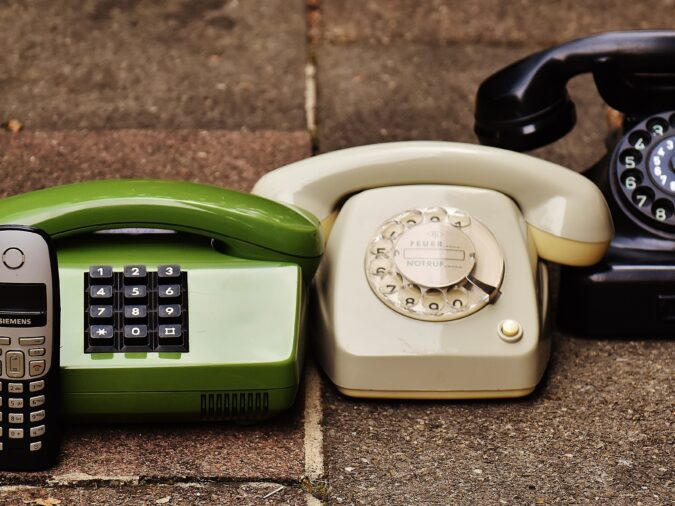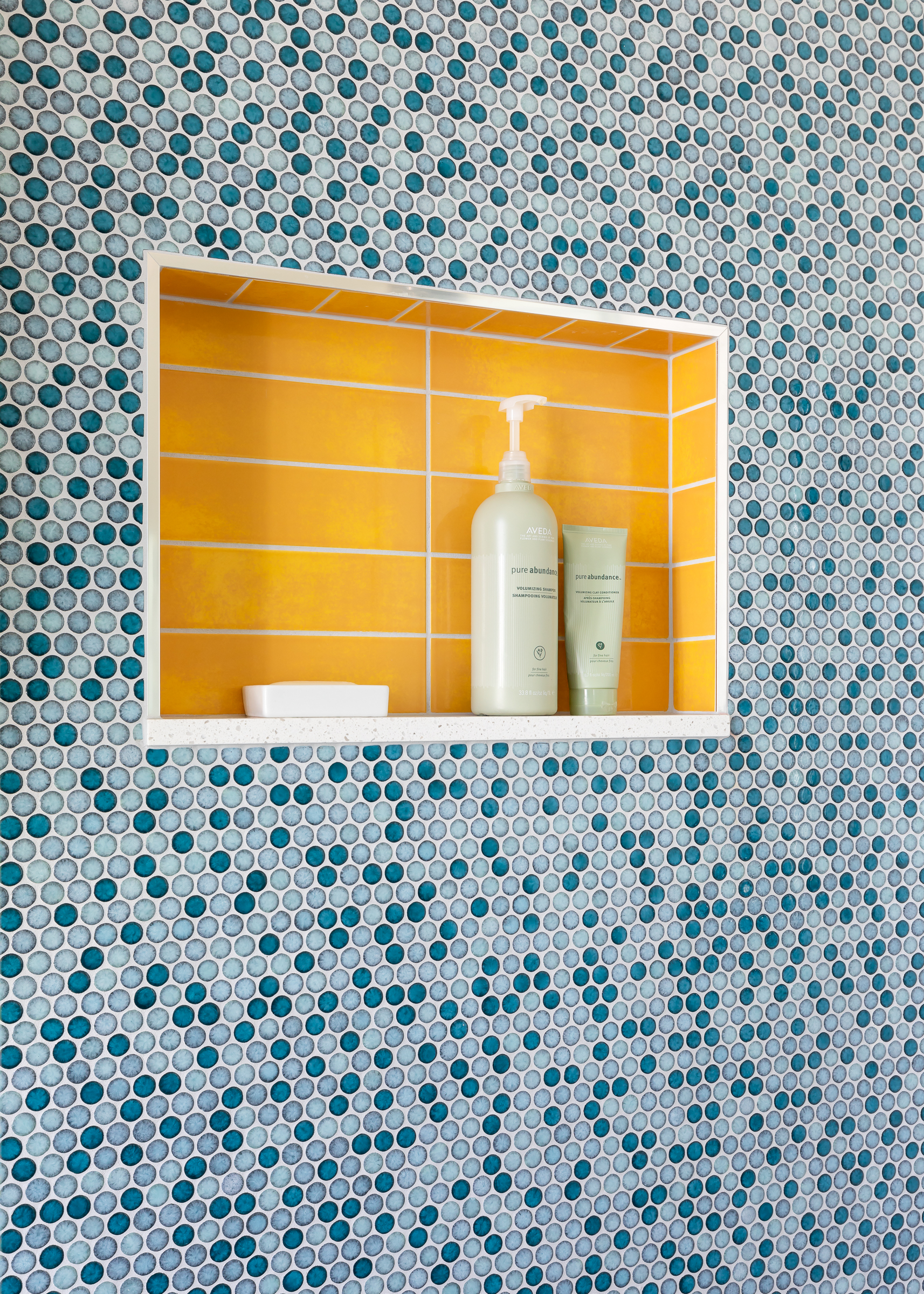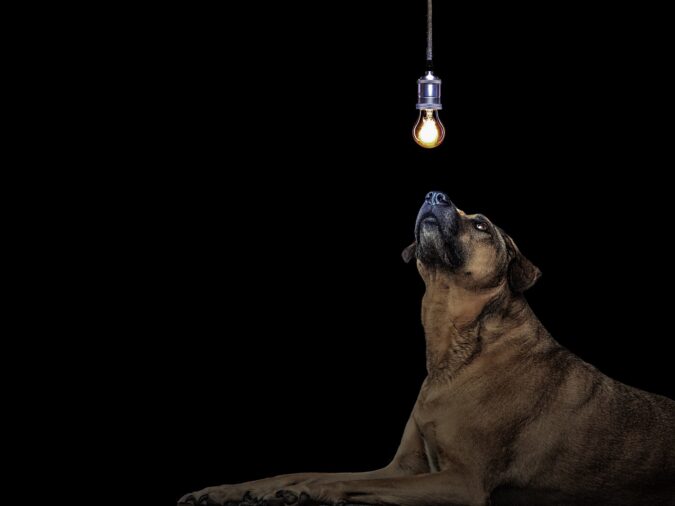Best Lighting for Makeup Application
Best Lighting for Makeup Application
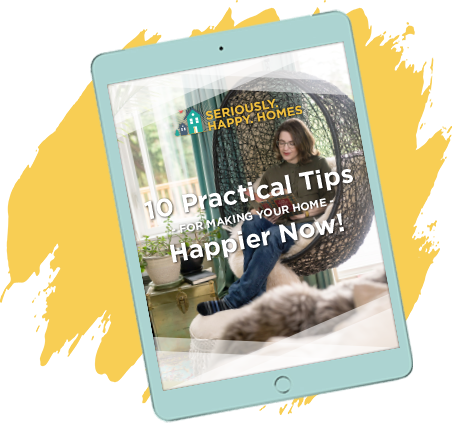
Eager to get happy at home right now?
Get 10 tips for a happier home!
If you’re going to spend good money on makeup that will make you look uh-maz-ing, why not have great lighting to help you put it on? While we can’t control the lighting in the dingy bar bathroom where we touch up our makeup, we do have a lot of control over the light in our home vanity areas. Let’s talk about what creates the best lighting for makeup application and how you can best update your lighting situation whether you rent or you are about to embark on a massive bathroom remodel.
There are three things that make some lighting better than other lighting. Two of them are easy to control whether you rent or own! The three things are:
1) The amount of light
2) The color of the light
3) The direction of the light
We’ll talk about direction of light in a moment, because it’s harder to control if you rent and can’t make changes to your space. First, let’s talk amount of light, and color of the light.
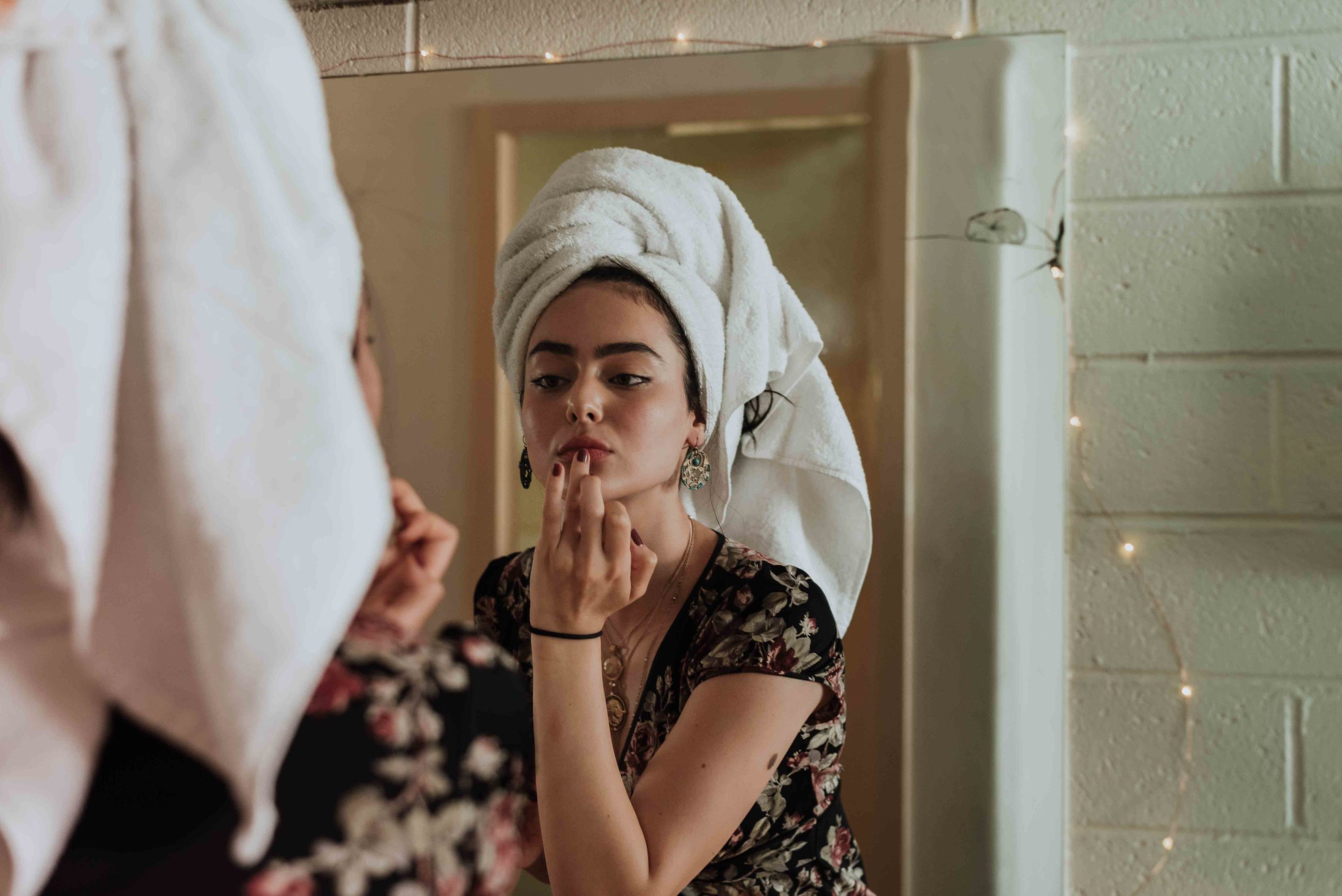
Amount of light
There is no hard rule for how much light output you need from each bulb. But generally, 75 to 100 watts per bulb is a good target. The problem is that these days there are many kinds of light bulbs. 75 watts is great for a traditional incandescent bulb, but the same amount of light output from a fluorescent or LED light will actually be labeled with lower wattage. Not to get too geeky here, but wattage is actually the amount of power or electricity the bulb uses, not the amount of light it gives off.
To compare apples to apples, you’d need to look at the “lumens.” This will usually be written on the package, and then you can google “1500 lumens equals how many watts” and get some quick and easy guidance to figure out if the bulb you’re looking at will give you as much light as a traditional 100-watt bulb. Quick answer: to equal a 100-watt incandescent bulb, look for a bulb that gives you about 1600 lumens.
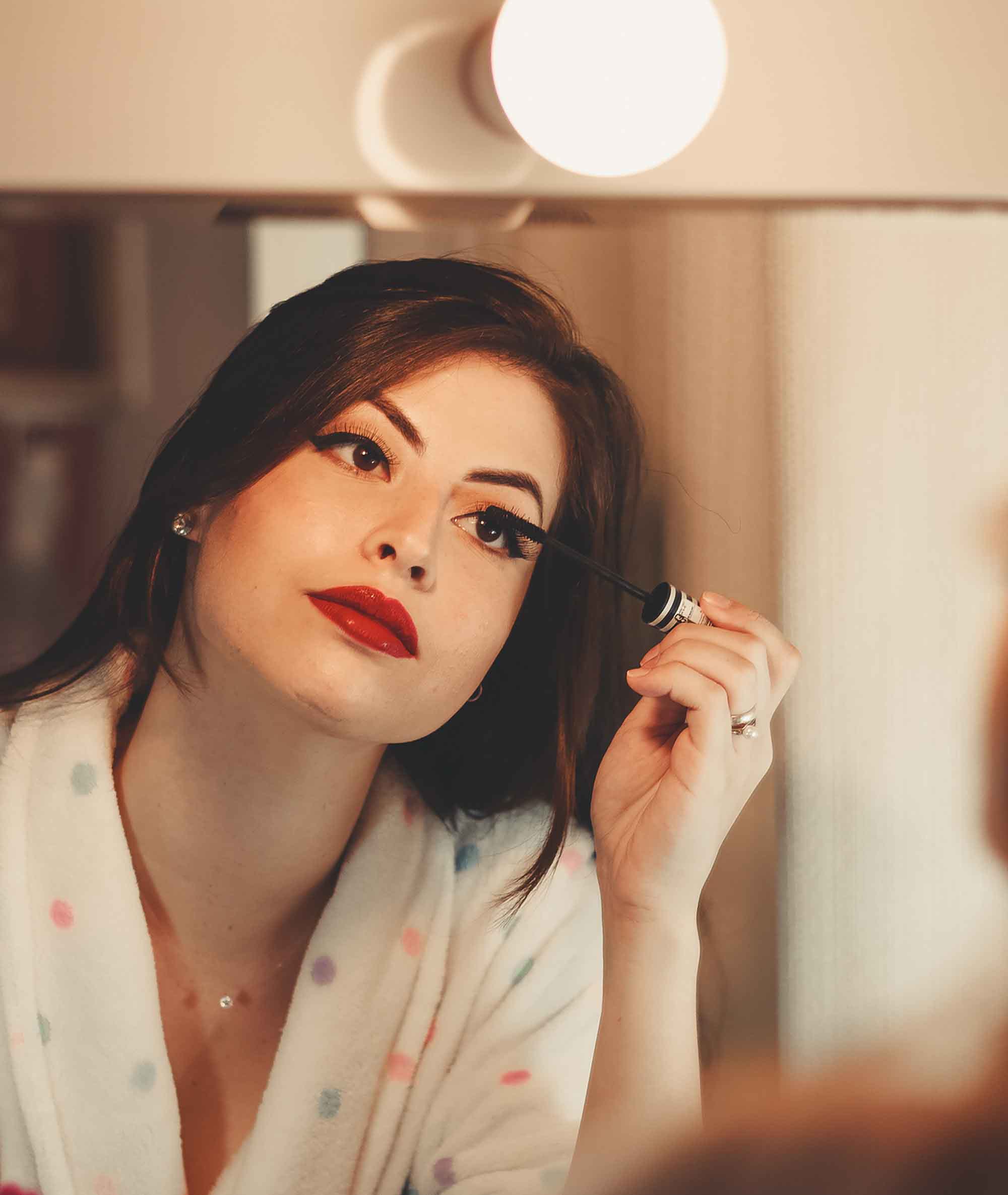
Goldilocks Lighting – brightness
It may seem obvious that you don’t want light that’s too dim. Who wants to put their makeup on in the dark? – But you also don’t want to go too bright. Not only will it be glare-y and make you squint (not good for makeup application) but it also won’t be like the light you’ll have at your destination, and you may find that you’ve put on too much or too little because your lighting was poorly designed. (On the other hand, if you’re about to go on TV, use those bright lights because the camera and set lights will be *very* bright and you don’t want to look washed out!) Ideally, you’ll have your lighting on a dimmer switch and you can adjust it for the conditions you’ll be working – or partying – in.
Light Color
Just as important as the amount of light is the color of the light. This will be influenced in part by the type of bulb you are looking at – fluorescent, incandescent, LED, etc. While a fluorescent bulb might be energy efficient, even the color-balanced versions tend to be overly bright and harsh, and many give off a cool, blue cast. This might make you over-apply your foundation, bronzer, or blush as you try to give your skin a little color, and then you risk walking outside looking like an oompa loompa.
Traditional incandescent lights are known for having a warm, soft, or yellowish light. Warm light is great in a living room where you want people to feel cozy and relaxed, but again, may not give you the best makeup results. They are also the least energy-efficient and are slowly being fazed out as people (and law-makers) become more energy aware.
LED lights had a bad reputation when they first came on the market for being either blue or very unpredictable in their color temperature. They have gotten soooo much better and now you can really fine-tune the color temp and lumen output you want. They are also energy efficient and tend to last a really long time. So they have kind of become the new go-to bulb choice in much of the design community.
Goldilocks Lighting – color
In the end, though, all you are trying to do is control the color of the light. That brings up another technical word: “kelvins.” Kelvins are what we use to record color temperature. Cool colors like blue and white generally have color temperatures over 7000K, while warmer colors like red and orange are around 2000K. Most of the bulbs in people’s homes will be in the soft, warm 2700-3000K range. This makes everyone look just a little better even if they are not wearing makeup, but for makeup application aim for a whiter light, more like daylight, between 4800 and 5000K.
Light Direction
This is the one I get picky about, because I feel like I can adjust to a dim or bright room or even a bad color temperature if I’ve already got my routine and products down. But I don’t want to be competing with shadows from light bulbs when I’m trying to put on eye shadow. There are three directions lighting will usually come from in a bathroom; from the sides of the mirror, over the top of the mirror, or the ceiling. Let’s start with the worst one – from the ceiling.
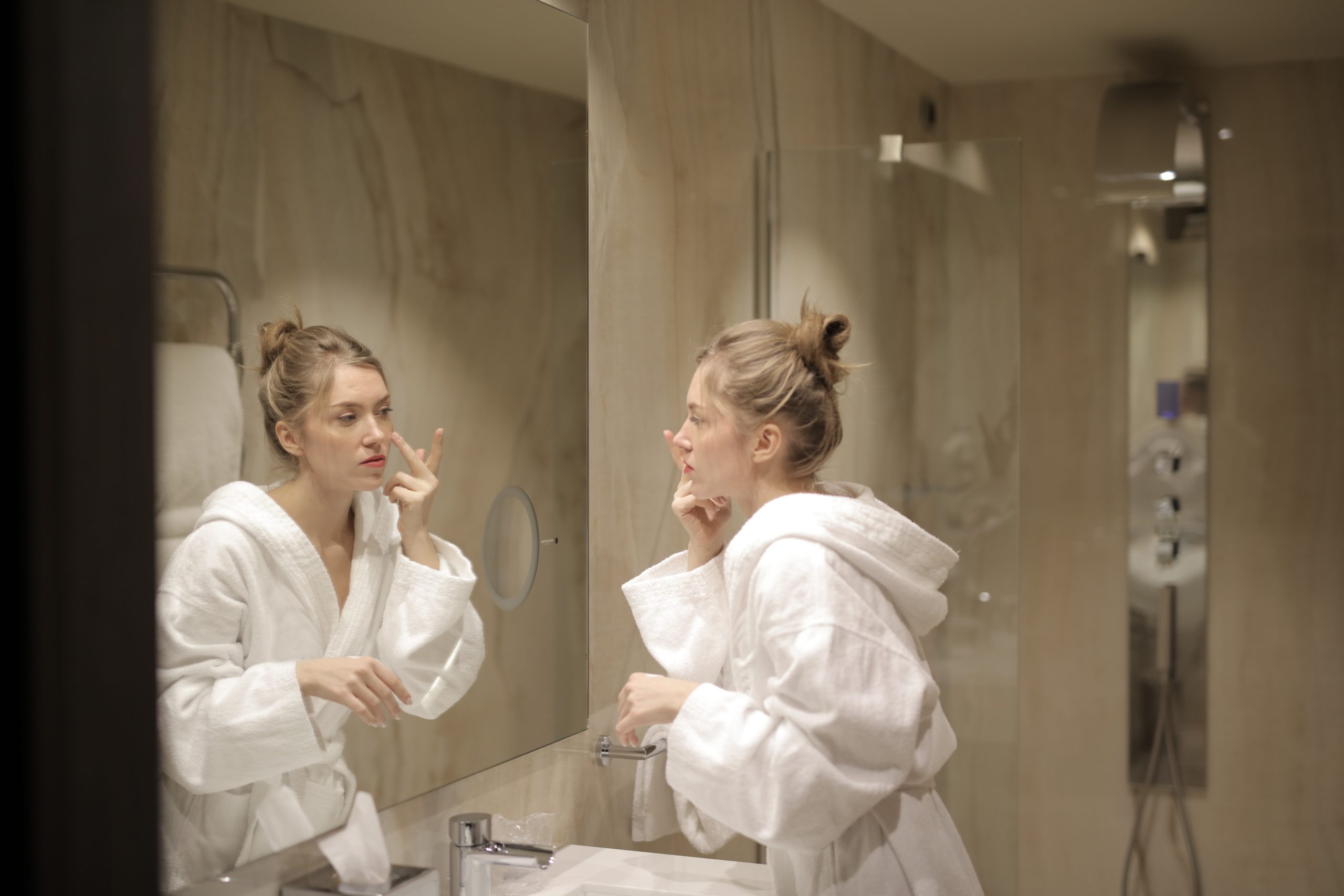
Downlighting
This. Is. The. Worst. Know how when you were a kid and used a flashlight to tell scary stories around the campfire? Downlighting (like from a recessed can in the ceiling) does the same scary thing. It casts horribly dark under-eye shadows and making you look decades the older you are. Ugh – who needs that?
Over-mirror lighting
This is really common, especially in smaller bathrooms. It’s better than recessed ceiling downlighting, especially if it is at least 24” wide and shines light down from that full width. The wider the lighting, the better this will light up your face. Still, having light from over your head isn’t ideal. It will force you to tilt your head up (and away from the mirror) making makeup application more challenging.
Side lighting
Side lighting (using a wall sconce on either side of the mirror) only works if you have enough space on either side of the mirror. If you have the room to install it, it’s a much better lighting layout for your makeup application because the light is coming from about eye-level (60” from the floor is standard) and crossing over itself so you don’t end up with those awkward under-eye shadows.
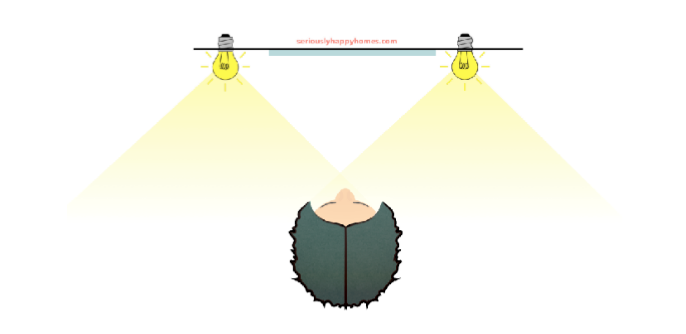
In the image below you can see me lit up by side sconces. Notice that I have some extra shadowing between my cheeks and nose. That’s because the wall sconces are spaced pretty far apart and the beams of light that each bulb casts don’t overlap in a way that eliminates the shadows completely. Still, it’s SO much better than downlighting!
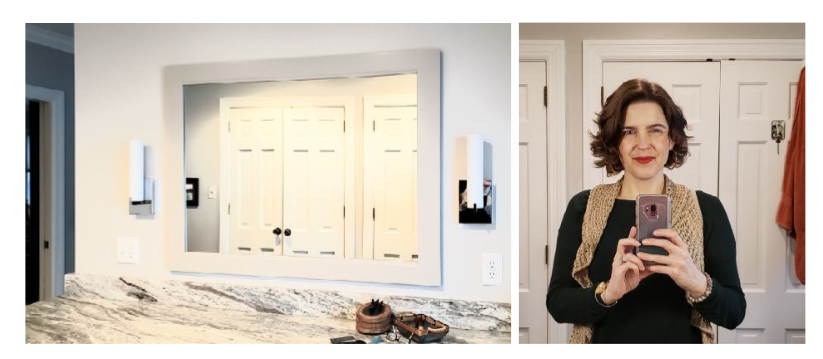
Integrated Mirror Lighting
This is technically the best lighting for your makeup application. Especially if the light is coming from not only the sides but also the top and bottom of the mirror. That gives you the same awesome all-around lighting as a ring-light used for many makeup application videos. Some people find them to be kind of glare-y, and they aren’t cheap, so if you’re in the market for this kind of upgrade see if you can find one to try at a showroom or hotel. In the image below you can see me in the same hotel bathroom where they had both recessed downlighting and integrated mirror LED lighting. Completely different shadows, and completely different color temperatures!
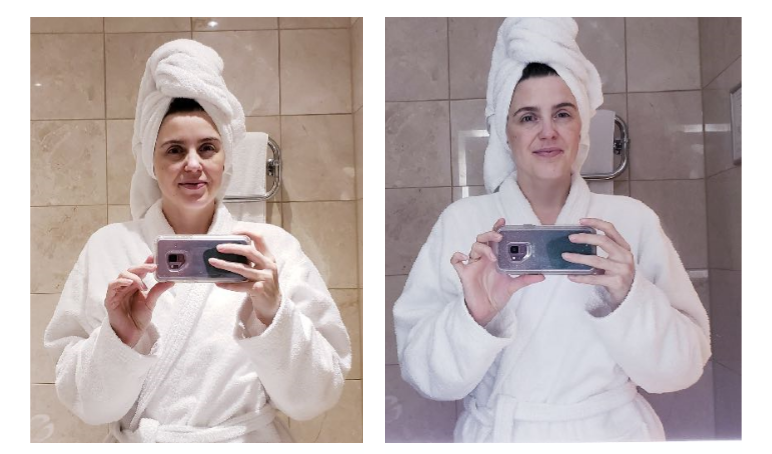
On the left you’ll see the author under downlighting – ugh! Notice the warm color temperature. On the right, the author is in front of an integrated mirror light. Notice the cooler color temperature.
Goldilocks Lighting – direction
You want to create cross illumination or side lighting so that that the light evenly diffuses across your whole face. If you can’t remodel, consider putting two small table lamps on either side of your sink (if you have room and enough outlets) or set up a makeup station on a desk in your bedroom that is wide enough to accommodate two table lamps (who says you have to put your makeup on in the bathroom?) Follow the same guidelines for quantity and color of light as you would for the bathroom.
One last tip
Finally, think about lighting when you are *buying* your makeup too. If you’re buying it in a shop you are likely sitting under fluorescent lighting. Try on the product early in the shopping day, then wander outside and check your look under natural light. Or, wander other stores with other lighting and check yourself in their mirrors. If you like it in multiple lighting conditions go back and buy it. It’ll save you a return trip later, and help ensure a happy purchase!
That’s it, your Seriously Happy guide to the best lighting for your makeup application! If you need more help determining what lighting would work best for your makeup routine, reach out to us and we can help!
May your home always be happy and may your face always be smiling!

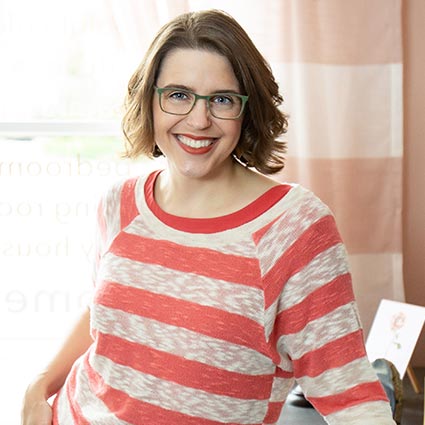
HI, I'M REBECCA WEST!
I’m an interior designer, author, podcaster, speaker, and coach to other designers. (Whew!) But I’m not your classic interior designer because, frankly, I don’t care if you buy a new sofa. I do care if your home supports your goals and feels like “you.” Remember, happy starts at home!
More From Seriously Happy Homes
Are you ready for a seriously happy home?
(Cue the confetti!)

Eager to get happy at home right now?

